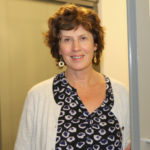
Media and Crime Prevention was the theme for the contact seminar arranged by Finnish NSfK Council member Minna Piispa in December 2020.
Some 40 Nordic researchers, policy makers and representatives from press and crime prevention councils and organizations attended the digital seminar.
Summaries of the key notes´ presentations
Ester Pollack, Professor, Stockholm University: Crime Journalism and Crime Policy: a complicated relationship
The main points in the presentation were that firstly, crime, especially dramatic and violent crime, generally generates great audience interest. Commercial news criteria favour issues that are conflict-oriented as this leads to attention, reactions and counter-reactions.
Secondly, for politicians and political parties, crime constitutes an important area for symbolic politics. Demands for harsher punishment and more severe reactions can quickly get media headlines without requiring long-term societal investments that cost money. Pollack said that media throughout history always has shown an interest in crime. Media content about crime informs politicians and contributes to crime policies – but the area has not always been heavily politicized. Only in the 1980’s and 1990’s legal issues become election issues and crime policy become a political battle-arena. Since then the news media have had a key-role in framing and forming public opinions on these issues.
Pollack also questioned who leads the discussion on crime, journalists or politicians. Journalists regularly take independent initiatives, but politicians are skilled and media trained and there is an interaction between journalists and influential actors/sources. She emphasised that the most significant source is still the police and other representatives from the judiciary (and most of them are men). Pollack stressed the importance of researchers and crime prevention professionals taking part in the public debate on crime, especially so when talking about crimes committed by immigrants, to provide correct information in the media, in an effort to avoid the debate being too heavily politicized.
Matti Näsi, University Lecturer, University of Helsinki: Crime news consumption and fear of violence
In the presentation, Näsi pointed to the dilemma that while crime goes down, crime news still goes up. He said that news focus tends to be on the more serious forms of crime. Since the mid 1990’s violent crime and property crime have been on the downturn in most Western societies. The amount of crime news, on the other hand, has been on the up for the most part of the past six or seven decades.
Näsi presented results from his study Views of Violence in a Changing Media Landscape (ViVi).
ViVi aimed to establish which media sources people use to gather information on violent crime, and to examine how consumption of different types of media and information sources associate with the contemporary experience of fear of street violence, avoidance behavior due to threat of violence, and perceived threat of terrorism that would include oneself.
One of the main results was that the more widespread the respondents’ crime news consumption was, the more likely they were to perceive that violence had increased both in Finland in general as well as in their neighborhood. Matti Näsi also emphasized that alternative information sources, conspiracy theories etc. occupies more space in the information sphere. This may lead to disappearance of reality re prevalence and manifestation of crimes.
Rune Holst Scherg, Post.doc at Roskilde University and Senior Consultant at Danish National Police: Experiencing fear: A situational perspective on fear of crime on how crime prevention can prevent fear of crime and, in particular, how the Problem Oriented Policing approach can be used in prevention.
According to Scherg, there is not enough theoretically analysed research on fear of crime to provide sufficient tools for prevention. In the Problem Oriented approach, a better understanding of the fear of crime as a phenomenon, a better understanding of the situation prevention and a conceptual analysis model of the fear of crime are essential.
In his presentation, Scherg divided fear into two types, episodes of fear and states of worry. Episodic fear is a concrete fear associated with a given situation or place. States of worry, on the other hand, is an abstract fear, an emotional state of insecurity, which does not need to be motivated by concrete danger situations, but by fear associated with certain issues, groups of people or situations.
In Denmark a study was carried out on how citizens are placing these two different fears in the map of Copenhagen. The study showed that fear and states of worry were placed in the map in very different ways, which indicates how separate these two types of fear are. For preventing fear, it is therefore necessary to distinguish between episodic fear and states of worry.
The conceptual model for analysis of fear used by Scherg consists of three factors, a fear generator, absence if reassurance and susceptible individuals. According to Scherg, the Problem Oriented approach works well in preventing fear of crime, as it emphasizes information gathered on phenomena and emphasizes the distinction between fears of two types of crime in order to invest in preventing them.
Rannveig Þórisdóttir, Department Manager and Senior Researcher, University of Iceland and the Metropolitan Police Department: Fear of crime and counter measures
The presentation was based on an annual comprehensive security survey in Iceland, focusing on the answers from the Reykjavik metropolitan area. Þórisdóttir made a distinction between actual fear (Anticipated fear) and likelihood of being victimized (Feeling of safety). In her research, apart from the feeling of fear, it is important to distinguish safety behavior, i.e. avoidance behavior not going to certain places, or not using certain services and protective measures, like weapons or security system.
According to the study, 90 percent of people living in the Reykjavik metropolitan area felt very safe and there was no difference between women and men. When respondents were asked how safe they felt in the centre of Reykjavik, 40 percent felt insecure. Men, young people and people living in the area felt safer than others. Fear was exacerbated by media reports of crimes committed in the city centre and fear of inability to defend itself in the event of an attack and fear of the consequences of the attack. 70 percent of the respondents said that they do not believe they can defend themselves in a real situation of threat of crime.
The survey also asked how often the respondent during the last year had find him-/herself in a situation where s/he felt likely to become a victim of a crime. Almost half of the men had not been in such a situation at all, while almost 70 percent of women had been in close contact. Men said more often that they were afraid of physical violence than women, while women were more afraid of sexual violence. More women (85%) had taken some safety measures than men (43%). The most typical thing was to keep the phone close to call for help. Half of the women stated that they were making sure that no one could put anything in their drink at the bar, and that avoidance behavior was more common among women, especially avoiding poorly lighted and sparsely populated areas.
In summary, on a general level, the experiences of fear do not vary according to gender, but when looking at specific forms of crime and security measures, women fear more than men do, whereas there are no gender differences when it comes to securing homes from robberies.
Three concrete measures were put forward as a result from the contact seminar
- The current media landscape has a significant role in shaping the experience of violence. For politicians and political parties, crime constitutes an important area for symbolic politics. Thus, researchers and crime prevention practitioners need to take part in the media discussions on these issues.
- Research on fear of crime need to distinguish three elements of fear: fear of crime (emotion), actual fear (possibility or likelihood of crime) and safety measures (avoidance behavior, protective measures).
- Crime prevention needs better understanding of different types of fear and conceptual analysis of fear.
Plan for follow-up and how the results from the seminar will be managed
The research results and conclusions of the seminar will be used in crime prevention and in communication of the police in the Nordic countries and at least in Sweden, will be used for shaping a police strategy.

